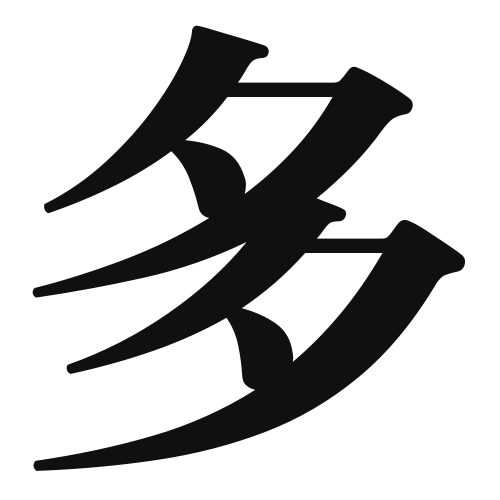1. Overview of Meaning
The kanji “多” (pronounced “ta” or “ooi”) means “many” or “much.” It is used to indicate a large quantity or a high degree of something.
2. Formation and Radical
Formation of the Kanji: The kanji “多” is classified as a phonetic-ideographic character (形声文字). It combines the meaning of abundance with a phonetic component.
Radical: The radical for “多” is “夕” (evening), which is found at the bottom of the character. This radical often relates to time or the concept of gathering, which can metaphorically connect to the idea of abundance.
3. Examples of Usage
Common Words and Phrases: Some frequently used words that include “多” are:
- 多い (おおい, ooi) – many
- 多様 (たよう, tayou) – diverse
- 多数 (たすう, tasuu) – a large number
Example Sentences in Daily Conversation:
- この店には多くの種類の果物があります。
(This store has many kinds of fruits.) - 彼は多忙な日々を送っています。
(He is leading a busy life.)
4. Synonyms and Antonyms
Similar Kanji: A kanji with a similar meaning is “豊” (ほう, hou), which means “rich” or “abundant,” but it often refers to richness in quality rather than quantity.
Antonyms: The antonym of “多” is “少” (すくない, sukunai), which means “few” or “little.” This word indicates a small quantity or degree.
5. Cultural and Historical Background
Connection to Japanese Culture: The concept of “多” is significant in Japanese culture, where abundance is often associated with prosperity and happiness. It is commonly used in various contexts, from describing food to expressing feelings.
Proverbs and Idioms: One relevant proverb is “多ければ多いほど良い” (おおければおおいほどよい, ookereba ooi hodo yoi), which translates to “the more, the better,” emphasizing the positive aspect of having many resources or options.
